- Home
- Janet Dailey
Nightway
Nightway Read online
Challenged…
“Damn you, Hawk!” She swore at him to mask her disappointment and snatched the bra from the hook of his finger. He laughed, a throaty sound rich with amusement. She struck at him, but he caught her hand before it reached his face and pulled her against him. “Brute!” she hissed.
“And you are a tease,” he accused softly and silenced any reply with his mouth. Instantly there was a wild, hungry response to the domination of his kiss. The stiffness fled from her body; every curve welded itself to him.
Passion flamed hot and unchecked in both of them. Hawk let it burn, the heat flowing through his sensitized flesh. Yet there was no haste, no urgency in him. He would take her in his own good time and not be hurried by Carol as she was prone to do if he let her set the pace.
His mind knew no guilt in taking her. In this, there was no confusion. For once, the practices of the Navaho and the white were in accord. Sex and the desire for it were natural things, as inevitable as life and death.
Books by Janet Dailey
The Great Alone
The Glory Game
The Pride of Hannah Wade
Silver Wings, Santiago Blue
Calder Born, Calder Bred
Stands a Calder Man
This Calder Range
This Calder Sky
The Best Way to Lose
For the Love of God
Foxfire Light
The Hostage Bride
The Lancaster Men
Leftover Love
Mistletoe & Holly
The Second Time
Separate Cabins
Terms of Surrender
Western Man
Nightway
Ride the Thunder
The Rogue
Touch the Wind
Published by POCKET BOOKS
Most Pocket Books are available at special quantity discounts for bulk purchases for sales promotions, premiums or fund raising. Special books or book excerpts can also be created to fit specific needs.
For details write the office of the Vice President of Special Markets, Pocket Books, 1230 Avenue of the Americas, New York, New York 10020.
An Original Publication of POCKET BOOKS
POCKET BOOKS, a division of Simon & Schuster Inc. 1230 Avenue of the Americas, New York, NY 10020
www.SimonandSchuster.com
Copyright © 1981 by Janet Dailey
All rights reserved, including the right to reproduce this book or portions thereof in any form whatsoever. For information address Pocket Books, 1230 Avenue of the Americas, New York, NY 10020
ISBN 978-1-4391-8914-6
eISBN 978-1-4516-4030-4
First Pocket Books printing January 1981
26 25 24 23 22 21 20
POCKET and colophon are registered trademarks of Simon & Schuster Inc.
Printed in the U. S. A.
Author’s Note
Navaho healing ceremonials, commonly known as “sings,” are properly called “Ways,” because of the precise manner in which they must be conducted. In these ceremonies, or ways, myth-dramas are acted out.
One of the more popular rites is Night Way. In it, Changing Woman (comparable to Mother Nature), who gave birth to the Navaho race, tried to create light in a world of darkness. On the floor of the hogan, she made a dry-painting: white first for dawn; on it, blue for morning; on the blue, yellow for sunset; and, finally, black for night on the yellow. She prayed but no light came.
She added turquoise and white shell beads. After her prayers, a faint light appeared. The twelve Holy People came to help, bringing more turquoise and shell beads to make a magic circle. Changing Woman held a crystal above it. A bright blaze appeared, but it was so hot and bright, they had to keep raising it and moving it to keep it at a safe distance.
In this way, light was created.
There are some 570 “songs” in Night Way. The verses quoted from selected “songs,” beginning each part of this book, are from translations by Washington Matthews, a noted authority on the Navahos.
PART
I
“… With your moccasins of dark cloud, come to us!
With your leggings of dark cloud, come to us!
With your shirt of dark cloud, come to us!
With your headdress of dark cloud, come to us!
… Today take out your spell for me.”
Chapter I
The land stretched out as far as the imagination, laced with arroyos and crowned with mesas and buttes. Cedar and pinon darkened the slopes while sage and grass tumbled across the floor of the empty plateau. Overhead, the dissolving vapor of a jet trail left a long, white streak in the bright blue sky above the Navaho Indian Reservation. Its boundaries spanned four states—Arizona, New Mexico, Utah, and Colorado—comprising an area larger than the combined size of Connecticut, Massachusetts, and New Hampshire.
On the southern edge of its border in Arizona, a canyon was gouged out of a carmine-red sandstone mass. A giant cottonwood stood tall, its top branches straining to reach the rim. The thickness of its leaves hid the opening of a cave hollowed into the rock face of the wall. It was empty now, long ago abandoned by the ancient ones who had once found it a sanctuary, and had left behind footholds chiseled in the wall. The cave overlooked the entire canyon, which contained only a speck of habitation, a one-room, six-sided log structure with its door facing the sacred east. Near it, the non-walled, crudely constructed “ramada” offered shade from the hot sun. Beyond it was a stick corral, a weathered buckboard outside it. The horse inside stood three-legged, its head hanging low, its scrub brush of a tail swishing at the buzzing flies. A mangy, rib-thin dog slept in a cool hollow, shaded by the hogan.
A boy, no older than nine, raced from the hogan in a skipping run. Clad in blue denim pants and a colorful clay-red shirt whose tail flapped free of the waistband, he wore soft leather moccasins on his feet. A yellow headband was tied around his unruly mop of hair, black and shiny as the crow’s wing. His skin was a copperish-brown, but his eyes were blue like the sky after it had been washed clean by a spring storm.
The bent figure of a young woman planting hills of corn straightened at the sound of running feet. She watched the boy approach, a smile of pride and deep affection lifting the corners of her mouth. Her eyes glowed like dark coals, radiating warmth and love. Straight and sleek black hair was smoothed away from her face and tied with a white string into a chignon at the nape of her neck, a style that emphasized her cheekbones and angling jawline. A silver concho belt circled the waistline of her blouse of green velveteen. Many petticoats billowed the long calico skirt, its hem touching the ankle-high moccasins of fawn-brown with their gleaming concho buttons. Her slender figure looked like that of a young maiden, high-breasted and with hips that hadn’t widened.
“Chizh kin góne yah ‘íínil.” The boy stopped beside her, barely winded by his run from the hogan to the cornfield.
“No.” She corrected the One-Who-Must-Walk-Two-Paths with a shake of her head. “You must say it in English. He thinks you don’t speak it well. You must learn it because it, too, is your language.”
A look of calm acceptance stole over the boy’s face. “I carried the wood into the house in one trip.” He repeated his previous statement, choosing his words with care. “Will he come today?”
Her gaze lifted from his upturned face to scan the land to the south. There was no road, only traces here and there on the hard ground to show a vehicle had found its way to this place. The Arizona wind was quick to erase any tracks. Some seventy miles to the east was the Arizona city of Flagstaff. Gallup, New Mexico, was one hundred twenty miles to the west. To the north, there was only Navaho land interlaced with rough trails, questionable roads, and rare highways. But to the south the ranch of her husband w
as located.
“Perhaps,” she hoped along with her son. The planting stick was in her hand, a reminder of the work to be finished. “Now that you have gotten the wood for our fire, you can help me plant the corn.” She handed him the pouch of seed kernels.
The corn was not planted in rows, which was the white man’s way, but in hills. The planting stick was the tool that poked many kernels nearly a foot into the ground where the Indian corn sent its long roots deep into the subsoil for moisture. “Four kernels for the cutworm, four for the crow, four for the beetle, and four to grow” advised an ancient proverb. Corn was the staple of their diet. Every bit of the plant would be eaten. The young sprouts would be boiled as greens; young, tender stalks would be roasted in ashes; undeveloped ears of corn would be made into soup; the first milk ears were to be used for mush and bread; and mature ears were ground into meal.
Corn was a sacred plant, not simply because of its value as a foodstuff. According to Navaho myth, the forerunners of man were made from two ears of corn, and it was only when four seeds of white, blue, yellow, and all colors were planted that the earth spread out.
White Sage knew this was not the way the white man believed the earth was formed. On the Reservation, there were many missions operated by members of the white man’s religions. The churches of the Franciscan Fathers, Methodist, Baptist, Mormons, and Episcopal, all claimed that their religion was the right one. This confusion among the whites enforced her belief in the centuries-old way of The People.
Besides, these Christians spoke of a far-off land called Palestine and a place named Bethlehem which White Sage could not visualize. The People told stories about the four sacred mountains, and White Sage, herself, had seen the San Francisco peaks outside Flagstaff which was the Mountain of the West. The white man’s Holy Book talked only about a male God and leaders who were men. White Sage missed Changing Woman, the principal figure in so many of their stories, and others like Spider Woman and Salt Woman. The white man believed their God was all-good, yet she knew that in all things there was evil, as well as good. The beliefs of the white man did not make sense.
The boy crouched low to the ground to drop the seed kernels in a thick cluster. While she poked them into the hill, he straightened to watch. A thoughtful frown creased his forehead.
“Are we poor?” he asked finally.
“No, we are not poor. Don’t we always have plenty of food to eat and warm clothes to wear? Your father provides us with everything we need and more. He is ‘rico.’”
Mary White Sage knew this because only a man who was very rich could afford to keep two houses and two families. The white teachers at the Reservation school had always insisted it was wrong for a man to have two wives. Yet Laughing Eyes had told her that white men did it all the time. They had often laughed at the foolishness of the white men’s ways, which dictated one thing while another was actually done.
She had understood when Laughing Eyes explained that his first wife would not like it if they all lived in the same house. His first wife’s ways were different from Mary’s. It had happened to a friend of Mary’s who had married a man who already had a wife. Her friend had constantly quarreled with the first wife because the woman was lazy. Finally, to ensure harmony, her friend’s husband had built a second hogan a mile away from the first and, thus, separated his two wives.
“Does he have a lot of sheep?” the boy asked. A Navaho’s worth was generally measured by the number of sheep he owned.
With the exception of those who lived outside the Reservation, land is not owned by an individual; rather, there is an “inherited use-ownership” which is possessed by the family as a whole. The man who is head of the household has control over it, but he may not give away or remove it from his family. Essentially, he holds it in trust for the real “owners”—his wife and children. Every member of the family inherits the right to graze livestock within a fairly well-defined area, the size of which is determined by the amount of land required to support the stock. The hogan that White Sage lived in was built on land that “belonged” to her mother’s family. Less than two miles away was the hogan of her uncle, Crooked Leg.
“He has many, many cattle,” she answered, which was more impressive, because cattle needed more land on which to feed. “And he has many, many people working for him—like that man Rawlins who has been here with him.”
“We should have sheep,” the boy announced firmly. “I am old enough to look after them. Crooked Leg lets me watch his sheep when we go there.”
“You cannot watch sheep when you are in school,” she reasoned.
The blue of his eyes that had been so sparkling and clear before darkened with resentment and suppressed rebellion. “I don’t need to go to school. You can teach me, and he can teach me all that I need to know.”
These words seemed strange coming from her son’s lips. He had always been so eager and quick to learn, so curious about everything, more inquisitive than the coyote. She paused to study him closely.
“Why don’t you want to go to school?”
He was slow in answering. “Because they say I’m not one of The People.” Navahos referred to themselves as dine’é, “The People.” Navaho was derived from the name the Tewa Pueblo Indians gave them, Apaches of Navahu, which means “enemies from the planted fields.”
“Who says that?”
“Everybody.” He shrugged aside a specific answer. “It’s because my hair isn’t straight like theirs, and my eyes are blue, not brown.”
As Mary White Sage hesitated, a sound alien to any that belonged to the land entered the range of her hearing. She turned to gaze at the dust cloud fast approaching their dwelling. Her large eyes became soft and luminous as she recognized the pickup truck.
“He comes,” she told her son.
The bag of seed corn was thrust into her hands. His vaguely sullen expression was replaced by one of boundless joy. He raced with the fleetness of the antelope to be at the hogan before the truck stopped. No more planting would be done while he was here, so White Sage carried the corn and planting stick as she followed her son. Although she didn’t run, her steps were no less eager than his, her petticoats swishing with each long, graceful stride.
When the truck stopped, the boy was there, ready to leap into the arms of the tall man who stepped from the cab, and swept him into the air. The ritual of their greeting was always the same. The boy laughed with delight when he was lifted above the man’s head, then brought down to be held in the hook of one powerful arm.
“How can a man’s son grow in just two days?” The man playfully rubbed the top of the boy’s head, rumpling black hair that was determined to escape the yellow headband that tried to straighten the front into bangs.
“I am like the corn. I’m always growing. I knew you would come today.”
Held at eye level, it was easy for the boy to see why his mother called his father Laughing Eyes. A thousand tiny lines crinkled the corners of his eyes, making them appear to laugh—eyes that were a lighter shade of blue, as his skin was a shade of brown lighter than the boy’s copper hue. Where the sun didn’t strike it, it was white.
“I brought you something.” The man reached inside the right pocket of his white shirt and pulled out a pack of chewing gum, the boy’s favorite treat. J. B. Faulkner gave the pack to the eager fingers reaching for it and set the boy on the ground.
The pack was ripped open and the first stick of gum was unwrapped and he jammed into his mouth. Before it was chewed soft, the second stick was being uncovered. The whole pack of gum inevitably wound up in the boy’s mouth to be chewed all at once.
“It would last longer if you chewed one stick at a time,” his father pointed out with wry indulgence, but the One-Who-Must-Walk-Two-Paths couldn’t reply because his mouth was full of gum.
White Sage watched the greeting between father and son, slowing her pace to give them these few moments alone. Her gaze ran proudly over the man who was her husband, a tall, broad-shoulder
ed figure in his white shirt and brown corded pants. A tan high-crowned Stetson hat covered most of his brown hair.
He looked the same as he had the first time she saw him. It had been the night of the Enemy Way ceremonial when The Girl’s Dance, the only part of the ceremony those foreign to The People were permitted to attend and participate in. The whites called it the Squaw Dance, few ever realizing that it was a War Dance. Those girls of marriageable age danced and sought partners from the audience of men. It had been the first that White Sage had taken part in. She had been dressed in her finest, even wearing her mother’s heavy squash blossom necklace of silver and turquoise.
At some point in the dance, she had noticed him sitting cross-legged and became aware that he was watching her and none of the other girls. Something had prompted her to ask him to be her next partner, and he had accepted. She didn’t remember how many times they had circled the scalp pole until others began to notice. She became worried that perhaps he didn’t know that he had to pay her before she could stop dancing with him. Usually the ignorance of the foreigners was regarded with amusement, but White Sage hadn’t wanted The People laughing at this man with the smiling eyes. So she had whispered it to him in her best school English.
“But I don’t want to stop dancing with you,” he had said. When she looked into his eyes, she had seen that he wanted to mate with her. She had felt the faint stirrings of a similar desire, even though she was non-sunlight-struck, a virgin. Finally, he had paid her ten times what anyone else had and returned to the circle of men so she could choose someone else.
But he found out the name of her clan and where her parents lived. He visited her several times, always bringing presents for her and her family. J. B. Faulkner was one of the few whites The People respected. White Sage learned he owned a big ranch south of the Reservation and often hired members of The People to work for him. A month after their first meeting, he went to her maternal uncle and arranged their marriage in a ceremony of The People.

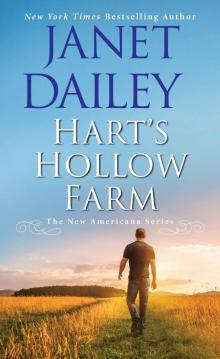 Hart's Hollow Farm
Hart's Hollow Farm Holding Out for Christmas
Holding Out for Christmas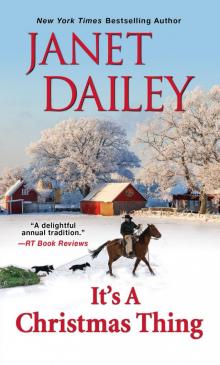 It's a Christmas Thing
It's a Christmas Thing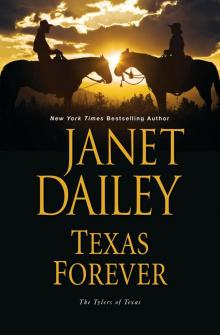 Texas Forever
Texas Forever Calder Born, Calder Bred
Calder Born, Calder Bred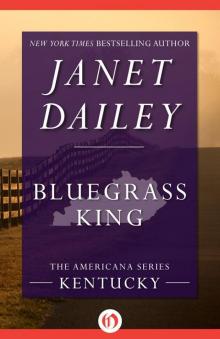 Bluegrass King (The Americana Series Book 17)
Bluegrass King (The Americana Series Book 17)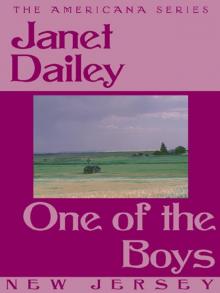 One of the Boys
One of the Boys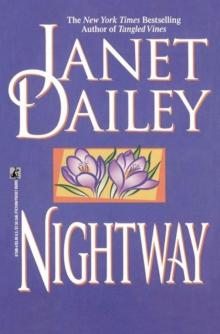 Nightway
Nightway This Calder Sky
This Calder Sky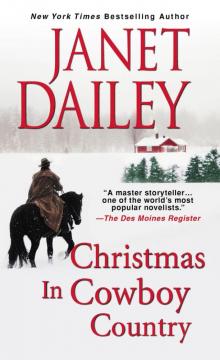 Christmas in Cowboy Country
Christmas in Cowboy Country The Widow and the Wastrel
The Widow and the Wastrel Separate Cabins
Separate Cabins Darling Jenny
Darling Jenny With a Little Luck
With a Little Luck The Thawing of Mara
The Thawing of Mara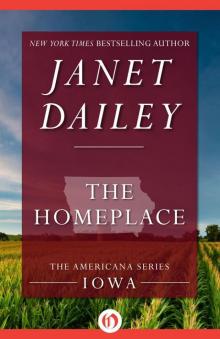 The Homeplace (The Americana Series Book 15)
The Homeplace (The Americana Series Book 15) American Dreams
American Dreams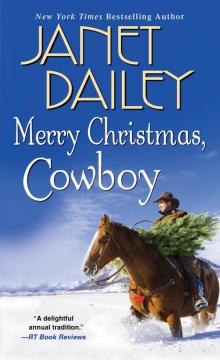 Merry Christmas, Cowboy
Merry Christmas, Cowboy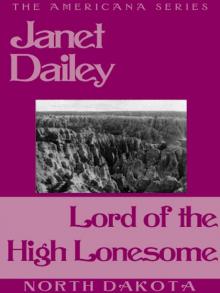 Lord of the High Lonesome
Lord of the High Lonesome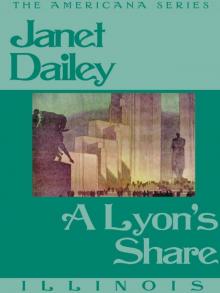 A Lyon's Share
A Lyon's Share After the Storm
After the Storm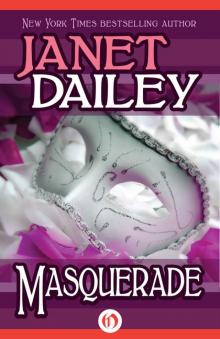 Masquerade
Masquerade Long, Tall Christmas
Long, Tall Christmas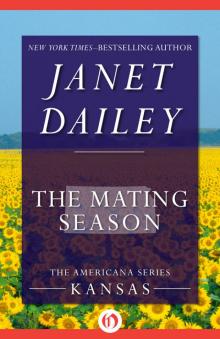 The Mating Season
The Mating Season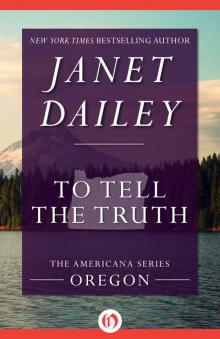 To Tell the Truth
To Tell the Truth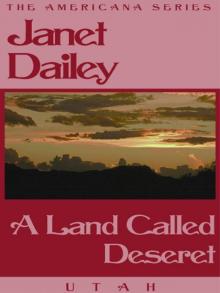 A Land Called Deseret
A Land Called Deseret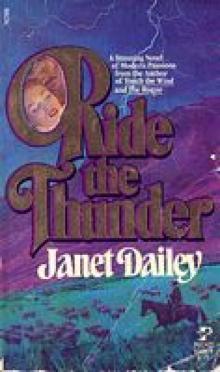 Ride the Thunder
Ride the Thunder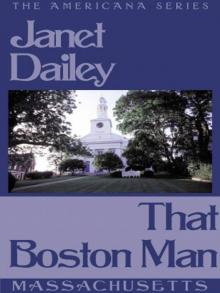 That Boston Man
That Boston Man Wild and Wonderful
Wild and Wonderful Sonora Sundown: Arizona (The Americana Series Book 3)
Sonora Sundown: Arizona (The Americana Series Book 3) Texas Tall
Texas Tall Giant of Mesabi
Giant of Mesabi The Bride of the Delta Queen
The Bride of the Delta Queen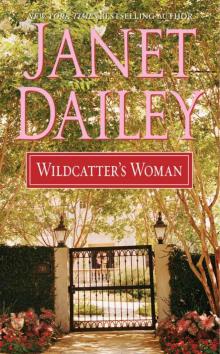 Wildcatter's Woman
Wildcatter's Woman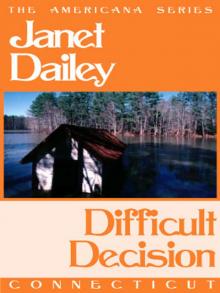 Difficult Decision
Difficult Decision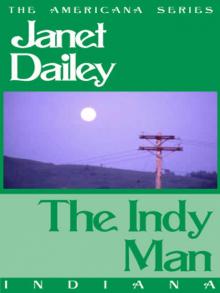 The Indy Man
The Indy Man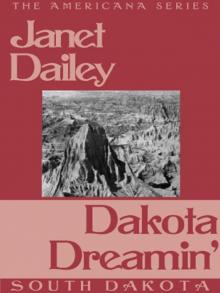 Dakota Dreamin'
Dakota Dreamin' Kona Winds
Kona Winds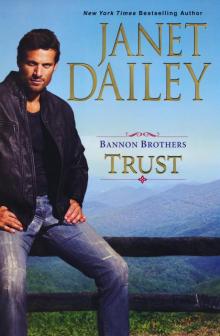 Bannon Brothers
Bannon Brothers The Lancaster Men
The Lancaster Men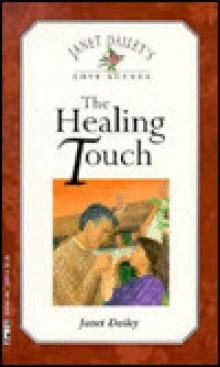 janet dailey- the healing touch
janet dailey- the healing touch Strange Bedfellow
Strange Bedfellow Leftover Love
Leftover Love Big Sky Country
Big Sky Country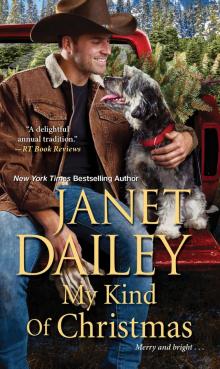 My Kind of Christmas
My Kind of Christmas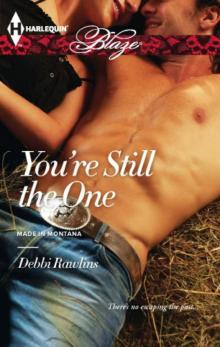 You're Still The One
You're Still The One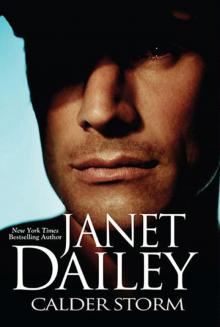 Calder Storm
Calder Storm Calder Pride
Calder Pride Low Country Liar
Low Country Liar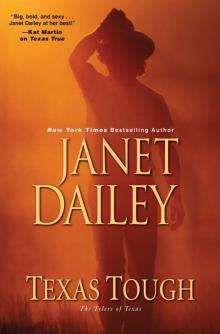 Texas Tough
Texas Tough Foxfire Light
Foxfire Light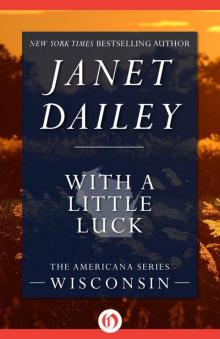 With a Little Luck (The Americana Series Book 49)
With a Little Luck (The Americana Series Book 49) Texas Fierce
Texas Fierce Sentimental Journey
Sentimental Journey The Pride of Hannah Wade
The Pride of Hannah Wade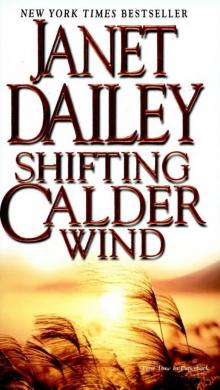 Shifting Calder Wind
Shifting Calder Wind Santa In Montana
Santa In Montana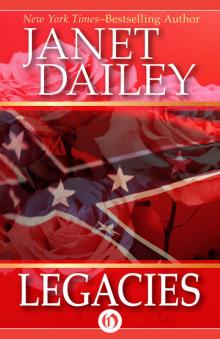 Legacies
Legacies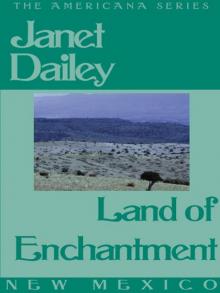 Land of Enchantment
Land of Enchantment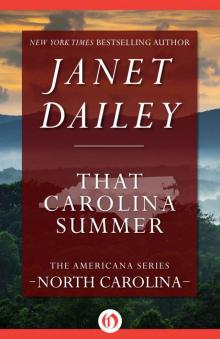 That Carolina Summer (North Carolina)
That Carolina Summer (North Carolina) Reilly's Woman
Reilly's Woman Refuge Cove
Refuge Cove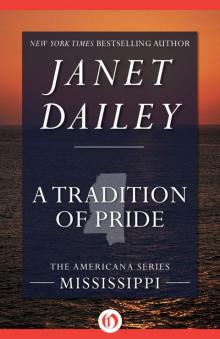 A Tradition of Pride
A Tradition of Pride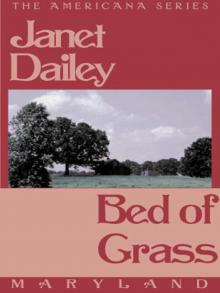 Bed of Grass
Bed of Grass To Santa With Love
To Santa With Love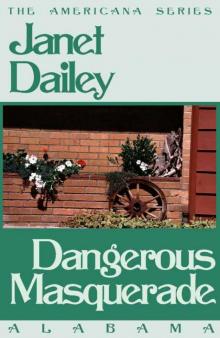 Dangerous Masquerade
Dangerous Masquerade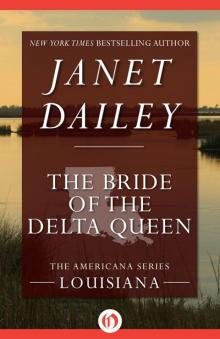 The Bride of the Delta Queen (The Americana Series Book 18)
The Bride of the Delta Queen (The Americana Series Book 18) Six White Horses
Six White Horses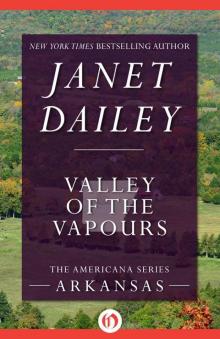 Valley of the Vapours (The Americana Series Book 4)
Valley of the Vapours (The Americana Series Book 4)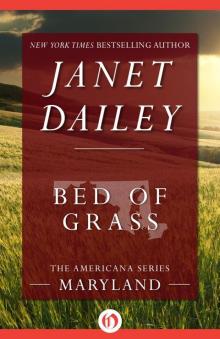 Bed of Grass (The Americana Series Book 20)
Bed of Grass (The Americana Series Book 20)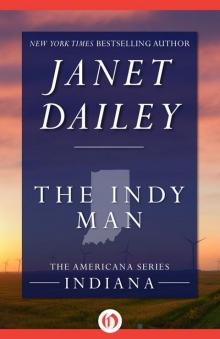 The Indy Man (The Americana Series Book 14)
The Indy Man (The Americana Series Book 14) After the Storm (The Americana Series Book 6)
After the Storm (The Americana Series Book 6)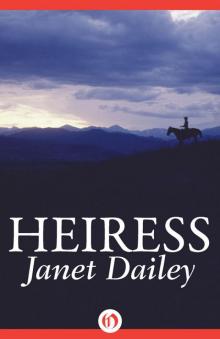 Heiress
Heiress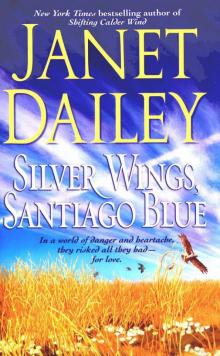 Silver Wings, Santiago Blue
Silver Wings, Santiago Blue The Rogue
The Rogue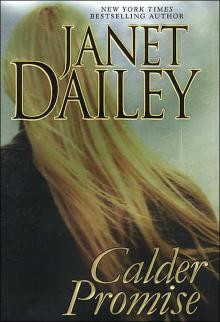 Calder Promise
Calder Promise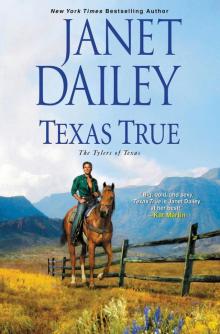 Texas True
Texas True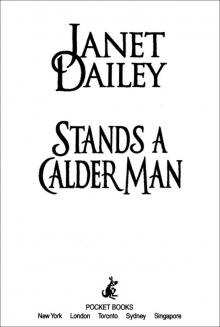 Stands a Calder Man
Stands a Calder Man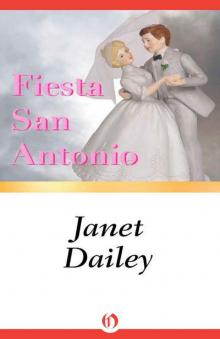 Fiesta San Antonio
Fiesta San Antonio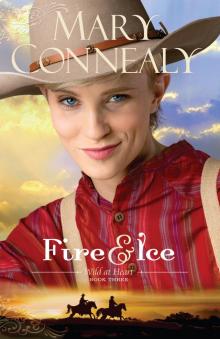 Fire and Ice
Fire and Ice For the Love of God
For the Love of God The Ivory Cane
The Ivory Cane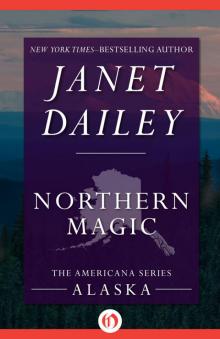 Northern Magic
Northern Magic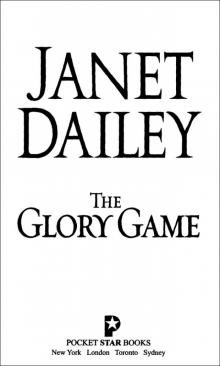 The Glory Game
The Glory Game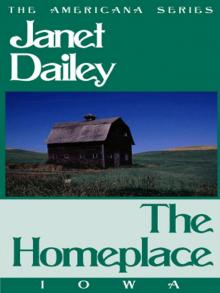 The Homeplace
The Homeplace The Great Alone
The Great Alone Summer Mahogany
Summer Mahogany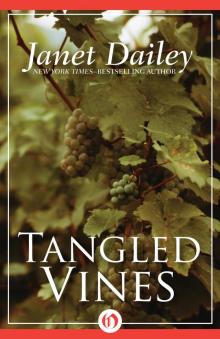 Tangled Vines
Tangled Vines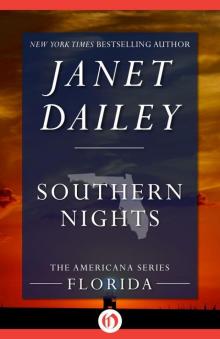 Southern Nights: Florida (The Americana Series Book 9)
Southern Nights: Florida (The Americana Series Book 9) Beware of the Stranger
Beware of the Stranger Big Sky Country: Montana (The Americana Series Book 26)
Big Sky Country: Montana (The Americana Series Book 26)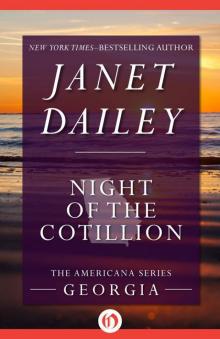 Night of the Cotillion: Georgia (The Americana Series Book 10)
Night of the Cotillion: Georgia (The Americana Series Book 10)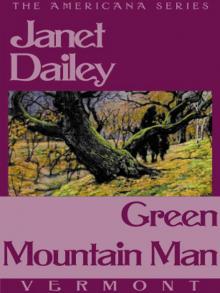 Green Mountain Man
Green Mountain Man For Mike's Sake
For Mike's Sake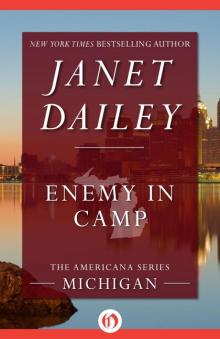 Enemy in Camp (The Americana Series Book 22)
Enemy in Camp (The Americana Series Book 22) Something More
Something More Rivals
Rivals Boss Man from Ogallala
Boss Man from Ogallala Just a Little Christmas
Just a Little Christmas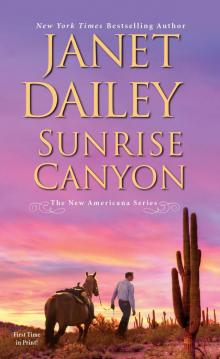 Sunrise Canyon
Sunrise Canyon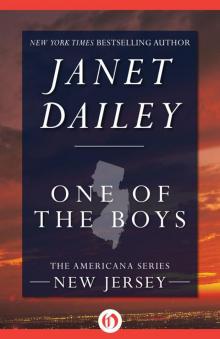 One of the Boys (New Jersey)
One of the Boys (New Jersey)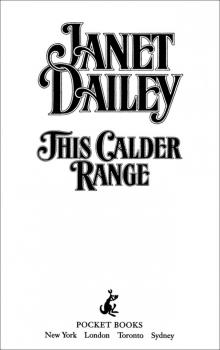 This Calder Range
This Calder Range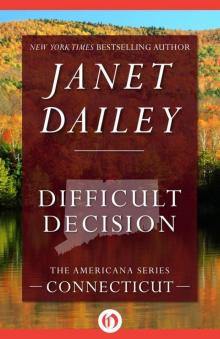 Difficult Decision: Connecticut (The Americana Series Book 7)
Difficult Decision: Connecticut (The Americana Series Book 7)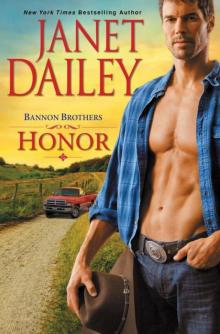 Honor
Honor Touch the Wind
Touch the Wind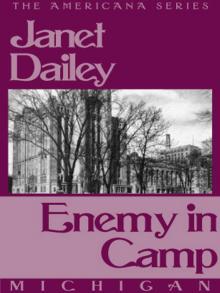 Enemy in Camp
Enemy in Camp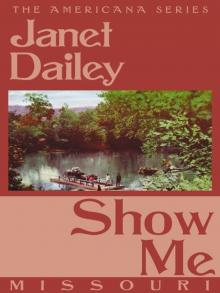 Show Me
Show Me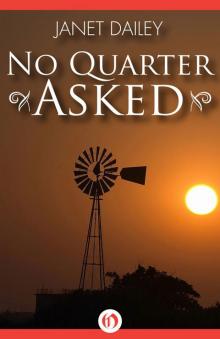 No Quarter Asked
No Quarter Asked The Second Time
The Second Time Aspen Gold
Aspen Gold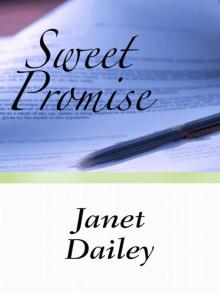 Sweet Promise
Sweet Promise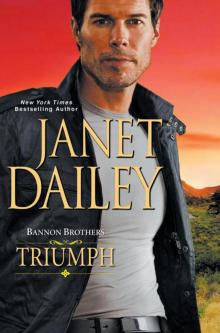 Triumph
Triumph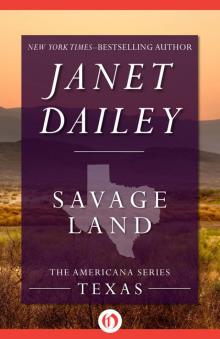 Savage Land
Savage Land Fire and Ice (The Americana Series Book 5)
Fire and Ice (The Americana Series Book 5)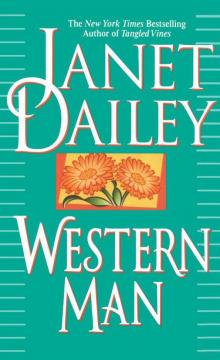 Western Man
Western Man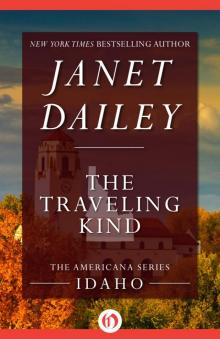 The Traveling Kind
The Traveling Kind The Hostage Bride
The Hostage Bride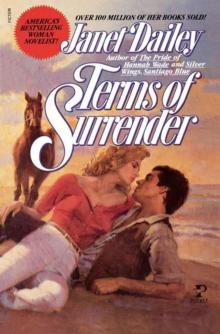 Terms of Surrender
Terms of Surrender Tidewater Lover
Tidewater Lover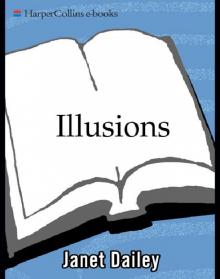 Illusions
Illusions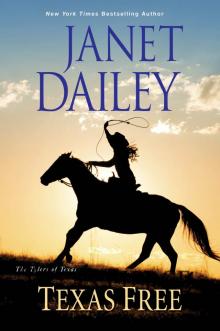 Texas Free
Texas Free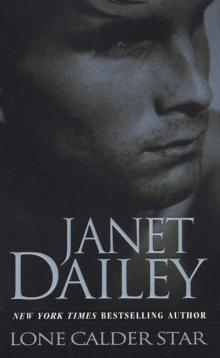 Lone Calder Star (Calder Saga Book 9)
Lone Calder Star (Calder Saga Book 9)